|
An introduction to construction variation claims for construction project managers Video 2 - Why contractors don’t always claim their additional costs or extension of time they're entitled to claim 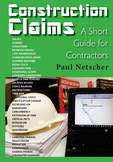 Information in this video is from the author's books: 'Construction Claims: A Short Guide for Contractors' and 'Successful Construction Project Management: The Practical Guide' and 'Building a Successful Construction Company: The Practical Guide'. All available from Amazon in paper or ebook.
0 Comments
Video 1 - Why it's important that contractors lodge variation claims when they have incurred additional costs or been delayed for reasons beyond their control. 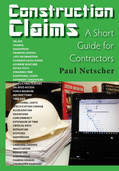 Information in this video is from the author's books: 'Construction Claims: A Short Guide for Contractors' and 'Successful Construction Project Management: The Practical Guide' and 'Building a Successful Construction Company: The Practical Guide'. All available from Amazon in paper or ebook.  Image courtesy of phasinphoto at FreeDigitalPhotos.net Image courtesy of phasinphoto at FreeDigitalPhotos.net I’m sure most of you at some stage have taken a bite from a nice big juicy apple or peach, only to find that the inside was rotten. Maybe it had a worm … or worse still, half a worm. You were taken in by the external appearance of the fruit and took a giant size bite in your eagerness to taste it. Maybe, sometimes you were just so hungry that you grabbed the fruit and bit into it without first checking the outside. Of course, you are now left with a mouthful of rotten fruit and a half eaten piece of unpleasant fruit. What do you do with it? Where’s the nearest trash can? How can you get rid of that foul stuff in your mouth before you chuck it up, and where can you rinse your mouth to get rid of the bad taste? Sometimes it’s easy and you are in the kitchen, but often you are out with friends and it’s not so easy to deal with. Unfortunately, the same happens with contractors and construction projects. Contractors are often beguiled by projects that seem so good, then they’re disappointed once they start the project to find that it’s not so great after all. Sometimes, contractors are just so desperate for the work that they grab the project without much thought, only to find that they’ve got a rotten project. They forget to first check the project, read the contract document, understand what’s required, and know the client. Frequently contractors are too busy to price projects properly, they assume things, guess prices and hope for the best. Then, when things go wrong, the project turns rotten, contractors are left holding the rotten project with no easy way to get rid of it. Like the rotten fruit, a rotten project can leave an unpleasant taste lingering for a very long time. How can we avoid rotten projects? It’s important when pricing any project to understand:
….Continue Reading..... 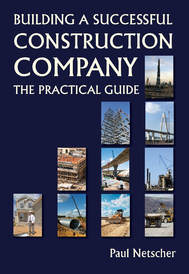 This article was first published on the ClockShark website. To visit this website and continue reading the article click on the link above. Please share this post To read more about the author’s books and find out where you can purchase them visit the pages on this website by clicking the links below:
To read more about the author visit the page 'Paul Netscher' Want to contact Paul Netscher please enter your details on 'Contacts' Find out how Paul Netscher can help you 
Ensure your home build project is a success. An easy to read book packed with expert tips and advice to guide you through all stages of your home build, helping you avoid pitfalls and common problems.
Get the what, where, how, who, when and why questions answered. My new book – ‘Build and Renovate Your Home with Your Eyes Wide Open’ is now available on Amazon and other online stores in paper and ebook. It’s for those planning to build and renovate a house who have limited construction knowledge. All stages of your home building project are discussed, from deciding what you want, where you’re going to build it, what help you need, designing your home, selecting and appointing contractors, what you need to know to do everything yourself, building processes, managing construction, and finally, completing the project. In addition, there are chapters on contractual and financial matters, as well as how to avoid common construction mistakes. To conclude, there are suggestions for simple changes you can make to improve your home. It’s an easy read book packed with expert tips and advice to ensure home building projects are a success. The information in this book will save you thousands and it will help you make your new home an even nicer place to live. Get your book today. Click on any of the links below to preview your copy.
Amazon Canada, Amazon Australia, Amazon Germany, Amazon France, Amazon Spain, Amazon Italy, Amazon India
Proper Planning, Preparation and Proactive Problem Preclusion (Prevention) Prevents Poor Project Performance.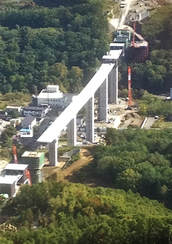 How often do we find that when construction projects go wrong that the real cause was due to poor planning and preparation? Unfortunately far too often! This is often due to the client’s (owner’s) team as much as it’s due to the contractor. Then, when there are problems on the construction project they aren’t detected early, or they’re ignored, or the wrong actions are implemented to correct the problem. So how can we improve construction project delivery? Planning – client Frequently the client and their team are to blame when construction projects go wrong because of their poor planning. Proper client side planning includes ensuring that:
Good planning by the contractor includes:
 Preparation – client The client’s proper preparations for the construction work includes:
The contractor’s proper preparations for construction work include:
Proactive Problem Prevention Proactive problem prevention includes:
Your construction project can be a success. Plan, prepare and be vigilant to foresee, prevent and solve problems. As I always say – it’s better to be a fire prevention officer than a firefighter, because it’s easier to prevent a fire than it is to extinguish a raging inferno which has already caused damage. Remember the 10 P’s to ensure your construction project is successful – Proper Planning, Preparation and Proactive Problem Preclusion (Prevention) Prevents Poor Project Performance. What problems have you encountered on construction projects that could have been prevented by proper planning and preparation? Do you have a proactive problem prevention strategy on your project? 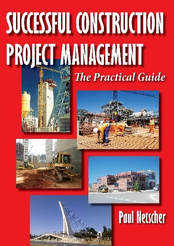 This article is adapted from information in the author’s popular books: 'Successful Construction Project Management: The Practical Guide' and 'Building a Successful Construction Company: The Practical Guide' and 'Construction Project Management: Tips and Insights' 'Construction Claims: A Short Guide for Contractors' is another of Paul's useful books. Paul has recently published 'Construction Management: From Project Concept to completion'. Paul's new book: 'Build and Renovate Your Home With Your Eyes Wide Open' is for those with little construction experience who want to build or renovate a house. It's filled with tips and suggestions to help you on your way, ensuring you avoid the pitfalls of home construction projects. These books are available on Amazon and other online book stores. Paul publishes articles regularly on LinkedIn and his website. Paul writes regular articles for other websites, gives lectures, mentors, and is available for podcasts and interviews. © 2018 This article is not to be reproduced for commercial purposes without written permission from the author.  Image courtesy of bplanet at FreeDigitalPhotos.net Image courtesy of bplanet at FreeDigitalPhotos.net While traveling through Alaska a couple of years back we received shoddy service at the hotel restaurant (cold food, lengthy waiting times and some items on the menu out of stock). The following morning I dropped an item on the bedroom floor. When bending down to pick it up, I glanced under the bed and was appalled to see a thick layer of dirt, a used tissue, and a discarded plastic cup – obviously, no one had bothered to clean under the bed for months. Closer inspection of the rest of the room revealed more dust and dirt. This wasn’t a cheap hotel, and they were serving dozens of guests every day. Now I believe in reporting a problem to management, so before checking out I asked to see the manager. I told him what I had seen in the room and offered to show him my room. He declined the offer. I was given a sad story about how difficult it was to get good help and that this was the start of the summer season. My wife and I were each given fifty dollar vouchers. I really didn’t get the impression that anything was going to change at the establishment which was owned by a large company, so I sent a complaint to their office. Several months later I received a call from a junior representative to ask me some questions, they undertook to forward my complaint and gave me another fifty-dollar voucher. That was the last I heard about the matter. Now I often submit reviews on TripAdvisor, both good and bad. This hotel got a poor review from me. I was fascinated to see that several months after my review was posted other reviews featured similar complaints, so obviously, no one bothered to take my comments seriously. Recently I stayed at a guest lodge in Johannesburg, and was appalled at how dirty the room was; black mold all over the shower, dust, and dirt everywhere torn bath mat, cigarette burn in the sheet (and no this wasn’t some cheap boarding house but a supposedly upmarket hotel). Needless to say, my review was not favorable. The management did reply to my review and said the guest lodge was undergoing an upgrade and I was welcome to return when it was complete, and I would receive a complimentary night’s accommodation. Really, the hotel is undergoing upgrades and this was the excuse for a dirty room, ragged bath mat, etc. I’ve noticed recently that many companies offer a bottle of wine, voucher, or gift to customers that complain. This seems like a bribe to me. Here is something for free, now go away and stop complaining. But I’m not complaining to get a free gift, rather I’m complaining so that action can be taken to improve the situation so that the following customers get better service than me. In construction, things will go wrong. We will have unhappy customers. Customers will complain. In fact, I welcome customers’ complaints. At least it means they are still talking to us rather than customers talking with their feet. The first we know they are unhappy is when they don’t return – then it’s too late. We’ll never see them again, we’ll never get the chance to convince them that we can do better, and we’ve probably upset other customers in the meantime with the same fault. So how should we respond to customer complaints? Well, I think the first thing is to listen to them. Often managers try and interrupt customers, argue with them, or make excuses – even blaming others. Invariably this makes the customer more irate. No matter how annoyed the customer is, let them get the problem out. In fact, offer to take them to some chairs so you can discuss the problem and you’ll often find they eventually run out of steam. Just the act of sitting down and listening quickly deflates them. It’s important to acknowledge the problem, even if it seems trifling to you. Understand what the problem is. Outline what steps you will take to correct the problem. Even follow up with the customer later (a telephone call or email) to tell them what has been implemented to correct the problem and prevent the problem from recurring. Equally important is to ensure that the problem has in fact been corrected. Complaints and problems that are ignored can quickly upset an unhappy customer even further. But more importantly, as long as the problem isn’t sorted there will invariably be more unhappy clients. As a manager, it’s easy to make excuses, or blame others. But, is an angry client really interested in excuses? As management, we need to realise that we are responsible for those that are working for us. If they aren’t doing what they should be, then it reflects on us. Sure, we can’t be everywhere all the time, but it is our responsibility to ensure that those working for us understand what’s expected from them and that they have the skills and resources to deliver. It does mean that we should be continually checking on people and processes to ensure they are all performing correctly, and making appropriate changes when there’s a problem. Sure there are some customers who will complain about nothing. But make sure that you do investigate the problem to ensure there isn’t an underlying problem that you missed. In fact, often a problem, such as poor quality or rude service, is indicative of poor management. If management is slipping up on the basics of quality management they could be slipping up elsewhere, and before you know it the project is losing money. Sometimes the problem isn’t attributable to your company at all. Maybe the client has unreasonable expectations, they were expecting marble floor tiles and not ceramic ones. Well, explain to them that they are only paying for ceramic tiles and that’s what was in the specifications. Equally important is to ensure that your client has reasonable expectations. Don’t advertise yourself as a five-star hotel if you are a boarding house. Don’t advertise that your client will receive a luxury home when they won’t be. Of course, the fact that the house isn’t a luxury house should never be an excuse for poor quality. No matter what the price of the project, the client has a right to expect a quality build. Sure, cheaper projects may be smaller and have lesser specifications, but a cheap price should never be an excuse for poor quality workmanship or substandard materials. Sometimes the problem may be due to a design fault. If the designers are appointed by the client then point out why the problem isn’t yours, but offer advice on what steps the client could take to rectify the problem where possible. Always try and be understanding. Clients have usually paid lots of money and they expect to receive a quality product and value for their money. Conclusion ....Continue Reading..... 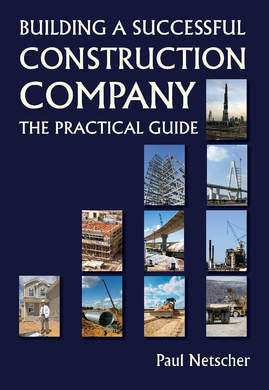 This article was first published on the ClockShark website. To visit this website and continue reading the article click on the link above. Please share this post To read more about the author’s books and find out where you can purchase them visit the pages on this website by clicking the links below: 'Successful Construction Project Management: The Practical Guide' 'Building a Successful Construction Company: The Practical Guide' 'Construction Claims: A Short Guide for Contractors' 'Construction Project Management: Tips and Insights' 'Construction Management: From Project Concept to Completion' 'Construction Book reviews' To read more about the author visit the page 'Paul Netscher' Want to contact Paul Netscher please enter your details on 'Contacts' Find out how Paul Netscher can help you |
Archives
June 2024
Note: We welcome genuine comments, especially comments that add additional information to the subject matter in the article. We however reserve the right to remove inappropriate comments, which includes comments that have nothing to do with the subject, comments that include inappropriate language, and comments that are an advertisement for a product or company, or which include an advertising link. Comments must be in English. We will not enter into discussion on why a particular comment was removed.
CategoriesCopyright 2016 - The attached articles cannot be reproduced for commercial purposes without the consent of the author.
The opinions expressed in the attached articles are those of the writer. It should be noted that projects are varied and different laws and restrictions apply which depend on the location of the contractor and the project. It's important that the reader uses the supplied information taking cognisance of their particular circumstances. The writer assumes no responsibility or liability for any loss of any kind arising from the reader using the information or advice contained herein. "I have what I consider some of the best books on construction management."
Books are available from: Amazon.com Amazon.co.uk takealot.com kalahari.com Amazon.in Amazon.de Amazon.fr Amazon.it Amazon.com.au Powell's Fishpond uread bokus Amazon.ca Amazon.es Other retail stores Available in paperback or on Kindle "28 YEARS OF CONSTRUCTION PROJECT MANAGEMENT EXPERIENCE, DEVELOPING SUCCESSFUL CONSTRUCTION PROJECT MANAGERS AND BUILDING SUCCESSFUL CONSTRUCTION COMPANIES"
|




 RSS Feed
RSS Feed




